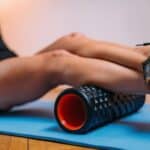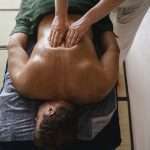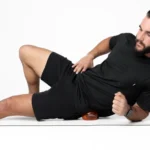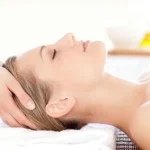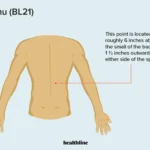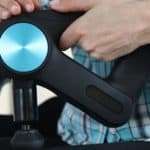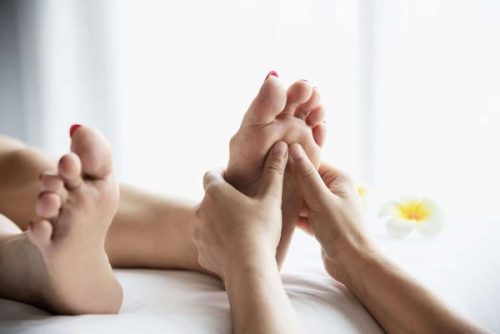If you’re dealing with stiff, sore calves and want to find a way to quickly and effectively work out the knots, then this article is for you. We’ll show you how to massage knots out of your calves easily and effectively in order to relieve the tension and help improve your overall mobility. With a few simple steps and some basic massage techniques, you can get rid of those annoying knots and get back to feeling your best.
Benefits of Massaging Knots Out of Your Calves
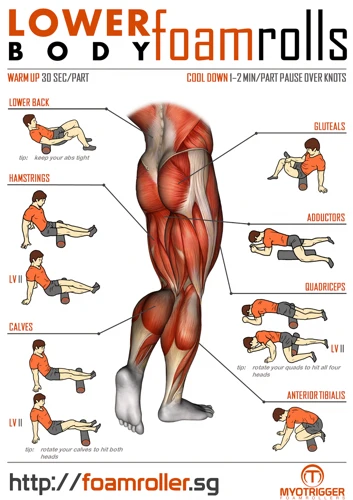
Calves are particularly prone to developing knots, which can lead to muscle tension, soreness, and discomfort. Regularly massaging knots out of your calves can provide a range of benefits, such as:
Relaxation: Massage helps to reduce tension and stress in your muscles, enabling you to relax and enjoy a sense of wellbeing.
Improved Circulation: Massaging the knots in your calves can help to improve the circulation of blood and oxygen around your muscles, which helps to reduce soreness and promote faster healing.
Reduced Pain: Massaging knots out of your calves can reduce discomfort, as well as help to break down adhesions and scar tissue, which can cause pain.
Improved Mobility: Regularly massaging knots out of your calves can help to improve your mobility, as well as strengthen the muscles and help prevent future knots from forming.
Improved Performance: Massaging knots out of your calves can help you to move more freely and with greater ease, resulting in improved performance when it comes to physical activities.
By massaging knots out of your calves regularly, you can reap the many benefits of a more relaxed, pain-free and mobile body. To learn how to massage a knot out of your calf easily and effectively, check out our comprehensive guide.
What Are Calves Knots?

Calves knots are areas of hardened, knotted muscle tissue that can cause pain, discomfort and even disrupt muscle function. They are caused by a build-up of lactic acid, which can be a result of overworking the muscle or due to a lack of stretching. Common symptoms of calves knots include tightness, tenderness, and a burning sensation.
Signs of Calves Knots:
- Pain and soreness
- Muscle tightness
- Burning sensation
- Tightness when stretching
- Limited range of motion
- Weakness in the muscle
How to Identify Knots in Your Calves
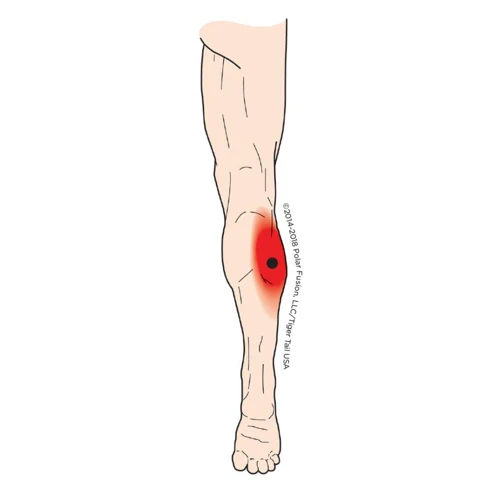
- Check for tenderness: Press your fingers into the muscle of your calf. If the area is tender and you feel knots, it may be a sign of an underlying issue.
- Look for physical changes: If the muscle is visibly swollen or has an unusual texture, it could be a sign of knots.
- Pay attention to pain: Knots can cause pain when you press on them. If you experience pain when you press on the muscle, it’s likely that you have knots.
- Observe your range of motion: Knots can limit your range of motion. If you find that your range of motion is limited or that you have difficulty moving your calf, it may be a sign of knots.
Massage Techniques for Knots in Your Calves
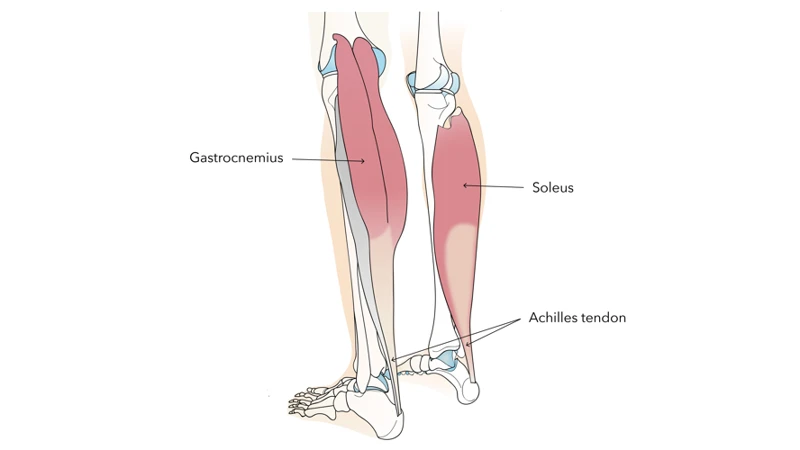
Trigger Point Massage
Trigger point massage is an effective way to reduce muscle tension and knots in the calves. This technique involves using pressure to specific points on the body that are associated with knots and tension in the muscles. Applying pressure to these points can help to loosen the knots and reduce soreness and pain.
Acupressure Massage
Acupressure massage is a massage technique that uses pressure points to target knots in the calves. This technique is similar to acupuncture, but instead of using needles, pressure is applied to specific points on the body. Acupressure massage is an effective way to reduce tension, reduce pain, and improve circulation.
Deep Tissue Massage
Deep tissue massage is a massage technique that focuses on the deeper layers of muscle tissue. This technique is a great way to reduce tension, knots, and pain in the calves. During a deep tissue massage, the massage therapist will use pressure to target deep layers of muscle in order to alleviate pain and stiffness.
Stretching to Help Reduce Knots in Your Calves
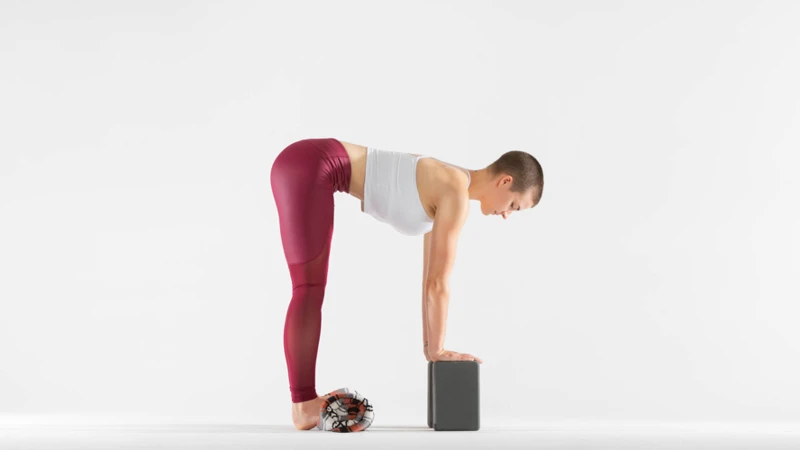
Hamstring Stretch
To begin, lie on your back and bring one leg up, flexing the foot. Keeping your leg straight, use a towel or strap to gently pull the leg closer to your chest. You should feel this stretch in the back of your thigh. Hold the stretch for 30 seconds and then switch legs. Repeat this three times.
Calf Stretch
Next, stand facing a wall with your hands on the wall. Place one leg behind you, bending the front leg and keeping your back leg straight. Push your heel down and feel the stretch in the back of your calf. Hold this stretch for 30 seconds and then switch legs. Repeat this three times.
Tips for Getting the Most Out of Massaging Knots Out of Your Calves

- Apply Pressure: Applying pressure to the knots in your calves can help loosen them up and release tension. Start with light pressure and gradually increase pressure to the area until you feel the knot loosen.
- Use Warmth: Applying a warm compress or heating pad to the area can help to loosen the muscles and relax them. This can also help improve circulation which can reduce tension in the muscles.
- Relax: Take deep breaths and relax your body while massaging the knots in your calves. This will help you focus on the area and help release the tightness.
- Stretch: Stretching the area before and after massaging can help to further release the tension in the muscles and improve flexibility.
- Move Around: Moving your legs and feet around can help increase circulation, which can help to reduce the tension in the knots.
- Take Breaks: Massaging knots can be a bit uncomfortable, so take breaks if necessary. This will also help to give your body a chance to relax and recover.
Risks and Precautions
- Physical Injury: Massaging your calves can cause physical injury if done excessively or with too much pressure. Avoid pressing too hard and massaging over any tender or injured areas.
- Allergic Reaction: If you use massage oil or lotion, make sure it is hypoallergenic, as some people may be allergic to certain ingredients.
- Bruising: If you massage too hard, you may end up with a bruise. To avoid this, use gentle, circular motions, and avoid pressing too hard.
- Worsening of Symptoms: Make sure to check with your doctor if your calf pain is caused by an underlying medical condition. Massaging the area may worsen the symptoms, so it is important to get the approval of your doctor before attempting to massage away the knots.
Frequently Asked Questions
How Often Should I Massage My Calves?
The frequency of calf massage depends on the severity of the muscle knots. With mild knots, massage the calves every other day. With moderate knots, massage the calves every day. For severe knots, massage the calves twice a day. Always listen to your body and adjust the frequency as needed. Make sure to give your calves a break from massage every now and then.
Can I Massage My Calves Too Much?
When it comes to massaging your calves, moderation is key. Massaging your calves too much, too frequently, or too hard can cause irritation and soreness. It is important to be gentle and to not overwork the muscles and tissue. Take breaks in between massages and only massage your calves for a few minutes at a time. If you experience any pain or discomfort, immediately stop the massage and consult a professional for further advice.
What Type of Massage is Best for My Calves?
Swedish Massage: This is the most popular type of massage and is best suited for knots in your calves. It involves long, gentle strokes, kneading, and cross-fiber friction of the muscles. This type of massage helps to relax the muscles and increase blood flow.
Deep Tissue Massage: This type of massage focuses on the deeper layers of the muscles. It uses slower, firmer strokes to target the deeper tissues and release tension. This is a great choice for those with chronic knots in their calves.
Trigger Point Massage: This type of massage uses direct pressure to release myofascial trigger points in the muscles. It is beneficial for knotty, tight muscles.
Sports Massage: This type of massage is best for athletes and active individuals. It combines various techniques to focus on the specific needs of the person. This can help to increase flexibility, reduce fatigue, and prevent injuries.
Reflexology: This is a form of massage that involves applying pressure to specific reflex points on the feet. It is believed that this type of massage can help to reduce stress, improve circulation, and promote healing.
What other techniques can I use to relax my calves?
Stretching is an important component of calf muscle relief. To stretch your calves, stand facing a wall and place your hands on the wall at shoulder height. Step one foot forward and bend your front knee while keeping your back leg straight. Hold for 30 seconds and switch sides. You can also try foam rolling, which helps to break up knots and tension in the muscles. Place a foam roller under your calves and use your body weight to roll back and forth in order to massage the muscles.
What kind of tools or supplies do I need for a calf massage?
A calf massage can be done with bare hands, but for an even better massage experience, you can use a foam roller, a massage ball, or a massage stick. You may also need some massage oil or lotion to reduce friction during the massage. Additionally, a heating pad can be used to help loosen up tight muscles before beginning the massage.
Conclusion
Massaging your calves is an easy and effective way to get rid of painful knots. It is simple to do, can be done with your hands or a massage tool, and can help reduce pain and tension in the muscles. Remember to be gentle and start with light strokes, then add more pressure as needed. If done regularly, it can help keep your calf muscles healthy and supple.
References
- Mayo Clinic: Muscle Cramps
- NCBI: The Effects of Self-Massage on Perceived Pain and Physical Performance: A Systematic Review and Meta-Analysis of Randomized Controlled Trials


